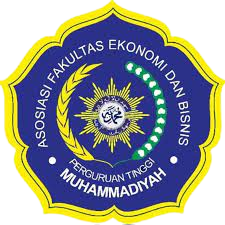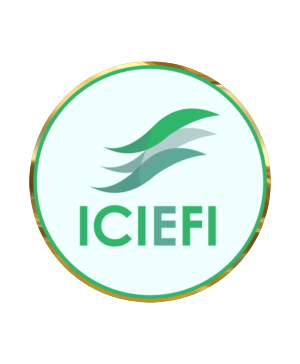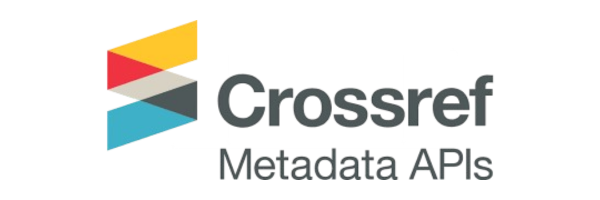Foreign Direct Investment Spillovers and Economic Growth: Evidence from Asian Emerging Countries
DOI:
https://doi.org/10.24269/ekuilibrium.v16i1.2021.pp49-63Abstract Research on FDI in promoting economic growth has been the focus of recent decades, especially in developing countries. Foreign direct investment can be one of the main objectives in increasing economic growth. FDI is assumed to indirectly contribute to economic growth through a spillover effect on the absorption capacity of a country by increasing the stock of human capital and the quality of institutions. This study aims to analyze the spillover effect of FDI on economic growth in Asian emerging markets. The data were analyzed using dynamic panel regression (GMM) during 2008-2017 period with STATA 14 software.The results in this study strongly indicate that the spillovers of FDI is proven to be able to drive economic growth through human capital and institutions in Asian emerging markets.
References
Adefabi, R. (2011). Effects of FDI and Human Capital on Economic Growth in Sub-Saharan Africa. Pakistan Journal of Social Sciences, 8, 32–38. https://doi.org/10.3923/pjssci.2011.32.38
Ahmed, E. M. (2012). Are the FDI Inflow Spillover Effects on Malaysia’s Economic Growth Input Driven? Economic Modelling, 29(4), 1498–1504. https://doi.org/10.1016/j.econmod.2012.04.010
Ajayi, I. S. (2006). Economic Development in Africa. In ADB/AERC International Conference on Accelerating Africa’s Development Five Years into the 21st Century, 22–24. https://doi.org/10.2307/2552538
Ali, F. A., Fiess, N., & MacDonald, R. (2010). Do Institutions Matter for Foreign Direct Investment? Open Economies Review, 21(2), 201–219. https://doi.org/10.1007/s11079-010-9170-4
Barro, R. J, Mankiw, N. G., & Sala-i-Martin, X. (1992). Capital Mobility in Neoclassical Models of Growth. In National Bureau of Economic Research (p. (No. w4206)). https://doi.org/10.1257/aer.90.3.687
Barro, R. J. (1991). Economic Growth in a Cross Section of Countries. The Quarterly Journal of Economics, 106(2), 407–443.
Barro, R. J., & Lee, J. W. (2013). A New Data Set of Educational Attainment in the World, 1950-2010. Journal of Development Economics, 104, 184–198. https://doi.org/10.1016/j.jdeveco.2012.10.001
Bekaert, G., Harvey, C. R., & Lundblad, C. (2011). Financial Openness and Productivity. World Development, 39(1), 1–19. https://doi.org/10.1016/j.worlddev.2010.06.016
Bénassy-Quéré, A., Coupet, M., & Mayer, T. (2007). Institutional Determinants of Foreign Direct Investment. World Economy, 30(5), 764–782. https://doi.org/10.1111/j.1467-9701.2007.01022.x
Borensztein, E., De Gregorio, J., and Lee, J. (1998). How does Foreign Direct Investment Affect Economic Growth? Journal of International Economics, 45(1), 115–135. https://doi.org/10.1111/1468-0351.00095
Carbaugh, R. J. (2004). EconomÃa internacional (No. 337 C3Y 1998.). Thomson.
Cooray, A., Dutta, N., & Mallick, S. (2017). Trade Openness and Labor Force Participation in Africa: The Role of Political Institutions. Industrial Relations, 56(2), 319–350. https://doi.org/10.1111/irel.12175
Cooray, A., Kumar, S., & Queen, M. (2011). What Explains Cross-Country Growth in South Asia ? Female Education and the Growth Effect of International Openness (No. 145; Issue June 2014).
Cooray, A., Mallick, S., & Dutta, N. (2014). Gender-Specific Human Capital, Openness and Growth: Exploring the Linkages for South Asia. Review of Development Economics, 18(1), 107–122. https://doi.org/10.1111/rode.12072
Daude, C., & Stein, E. (2007). The Quality of Institutions and Foreign Direct Investment. Economics and Politics, 19(3), 317–344. https://doi.org/10.1111/j.1468-0343.2007.00318.x
De Mello Jr., L. R. (1999). Foreign Direct Investment-Led Growth: Evidence from Time Series and Panel Data. Oxford Economic Papers, 51(1), 133–151.
Demena, B. A., & van Bergeijk, P. A. G. (2017). a Meta-Analysis of Fdi and Productivity Spillovers in Developing Countries. Journal of Economic Surveys, 31(2), 546–571. https://doi.org/10.1111/joes.12146
Farla, K. (2014). Determinants of Firms’ Investment Behaviour: a Multilevel Approach. Applied Economics, 46(34), 4231–4241. https://doi.org/10.1080/00036846.2014.955167
Feldstein, M. (2000). Aspects of Global Economic Integration: Outlook for the Future. NBER Working Paper (National Bureau of Economic Research), 7899, 1–15.
Gemmell, N. (1996). Evaluating the Impacts of Human Capital Stocks and Accumulation on Economic Growth: Some NEW Evidence. Oxford Bulletin of Economics and Statistics, 58(1), 9–28. https://doi.org/10.1111/j.1468-0084.1996.mp58001002.x
Groenewegen, J. (2004). Who should Control the Firm? Insights from New and Original Institutional Economics. Journal of Economic Issues, 38(2), 353–361. https://doi.org/10.1080/00213624.2004.11506694
Grossman, G. M., & Helpman, E. (1991). Innovation and Growth in the Global Economy. MIT press.
Hall, R. E., & Jones, C. I. (1999). Why do Some Countries Produce so Much More. Quarterly Journal of Economics, February, 83–116.
Hayat, A. (2019). Foreign Direct Investments, Institutional Quality, and Economic Growth. Journal of International Trade and Economic Development, 28(5), 561–579. https://doi.org/10.1080/09638199.2018.1564064
IMF. (2019). World Economic Outlook Update: Still Sluggish Global Growth. 9. https://www.imf.org/en/Publications/WEO/Issues/2019/07/18/WEOupdateJuly2019
Islam, S. (1995). The Human Development Index and per Capita GDP. Applied Economics Letters, 2(5), 166–167.
Javorcik, B. S. (2004). Does Foreign Direct Investment Increase the Productivity of Domestic Firms? in Search of Spillovers through Backward Linkages. American Economic Review, 94(3), 605–627. https://doi.org/10.1257/0002828041464605
Kose, M. A., Prasad, E. S., & Terrones, M. E. (2009). Does Openness to International Financial Flows Raise Productivity Growth? Journal of International Money and Finance, 28(4), 554–580. https://doi.org/10.1016/j.jimonfin.2009.01.005
Krugman, P. R., & Obstfeld, M. (2009). International Economics: Theory and Policy. Pearson Education.
Kuo, C. C., & Yang, C. H. (2008). Knowledge Capital and Spillover on Regional Economic Growth: Evidence from China. China Economic Review, 19(4), 594–604. https://doi.org/10.1016/j.chieco.2008.06.004
La Porta, R., Lopez-de-Silanes, F., Shleifer, A., & Vishny, R. (1999). The Quality of Government. Journal of Law, Economics, and Organization, 15(1), 222–279. https://doi.org/10.1093/jleo/15.1.222
Li, C., & Tanna, S. (2019). The Impact of Foreign Direct Investment on Productivity: New Evidence for Developing Countries. Economic Modelling, 80, 453–466. https://doi.org/10.1016/j.econmod.2018.11.028
Lin, C. H., Lee, C. M., & Yang, C. H. (2011). Does Foreign Direct Investment Really Enhance China’s Regional Productivity? Journal of International Trade and Economic Development, 20(6), 741–768. https://doi.org/10.1080/09638190903294866
Liu, W. S., Agbola, F. W., & Dzator, J. A. (2016). The Impact of FDI Spillover Effects on Total Factor Productivity in the Chinese Electronic Industry: a Panel Data Analysis. Journal of the Asia Pacific Economy, 21(2), 217–234. https://doi.org/10.1080/13547860.2015.1137473
Liu, X., & Zou, H. (2008). The Impact of Greenfield FDI and Mergers and Acquisitions on Innovation in Chinese High-Tech Industries. Journal of World Business, 43(3), 352–364. https://doi.org/10.1016/j.jwb.2007.11.004
Lucas, R. E. (1988). World Devziopment Report. Journal of Monetary Economics, 22(February), 3–42. http://linkinghub.elsevier.com/retrieve/pii/0304393288901687
Mankiw, N. G. (2006). Macroeconomist as a Scientist and Engineer. Journal of Economic Perspective, 20(4), 29–46. https://doi.org/10.32609/0042-8736-2009-5-86-103
Mankiw, N. ., Romer, D., & Weil, D. N. (1992). A Contribution to the Empirics of Economic Growth. The Quarterly Journal of Economics, 107(2), 407–437. https://doi.org/10.1515/bejm-2012-0042
Marcin, K. (2008). How does FDI Infow Affect Productivity of Domestic Firms? The Role of Horizontal and Vertical Spillovers, Absorptive Capacity and Competition. Journal of International Trade and Economic Development, 17(1), 155–173. https://doi.org/10.1080/09638190701728131
Meyer, K. E., & Sinani, E. (2009). When and Where does Foreign Direct Investment Generate Positive Spillovers a Meta-analysis. Journal of International Business Studies, 40(7), 1075–1094. https://doi.org/10.1057/jibs.2008.111
Muhammad, B., & Khan, S. (2019). Effect of Bilateral FDI, Energy Consumption, CO2 Emission and Capital on Economic Growth of Asia Countries. Energy Reports, 5, 1305–1315. https://doi.org/10.1016/j.egyr.2019.09.004
Nicholson, M. (2002). Intellectual Property Rights and International Technology Transfer: The Impact of Industry Characteristics. US Federal Trade Commission, Manuscript, 2–17.
North, D. C. (1993). Institutions and Credible Commitment. Journal of Institutional and Theoretical Economics, 149(1), 11–23. http://peintra.creatives-at-work.de/uploads/appointments/UMC4z0fuif0aLrzbJyyT/Kahnemann_New Challenges to the Rationality Assumption.pdf
OECD. (2012). No Title. Foreign Direct Investment for Development Maximising Benefits, Minimising Costs.
Ouyang, P., & Fu, S. (2012). Economic Growth, Local Industrial Development and Inter-Regional Spillovers from Foreign Direct Investment: Evidence from China. China Economic Review, 23(2), 445–460. https://doi.org/10.1016/j.chieco.2012.03.005
Raza, S. A., Shah, N., & Arif, I. (2019). Relationship between FDI and Economic Growth in the Presence of Good Governance System: Evidence from OECD Countries. Global Business Review, 097215091983348. https://doi.org/10.1177/0972150919833484
Reza, F., & Widodo, T. (2013). The Impact of Education on Economic Growth in Indonesia. Journal of Indonesian Economy and Business, 28(1), 23–44.
Romer, P. M. (1986). Increasing Returns and Long-run Growth. Journal of Political Economy, 94(5), 1002–1037.
Romer, P. M. (1990). Endogenous Technological Change. Journal of Political Economy, 98(5), 71–102.
Samuelson, P. A. (2010). Economics. Tata McGraw-Hill Education.
Schultz, T. W. (1961). Investment in Human Capital. American Economic Association, 51(5), 1035–1039.
Self, S., & Grabowski, R. (2004). Does Education at All Levels Cause Growth? India, a Case Study. Economics of Education Review, 23(1), 47–55. https://doi.org/10.1016/S0272-7757(03)00045-1
Shaihani, M., Harisb, A., Ismaila, N., & Saida, R. (2011). Long Run and Short Run Effects on Education Levels: Case in Malaysia. International Journal of Economics and Research, 02(06), 77–87.
Slesman, L., Baharumshah, A. Z., & Wohar, M. E. (2015). Capital Inflows and Economic Growth: Does the Role of Institutions Matter? International Journal of Finance and Economics, 20(3), 253–275. https://doi.org/10.1002/ijfe.1514
Solow, R. M. (1956). A Contribution to the Theory of Economic Growth. The Quarterly Journal of Economics, 70(1), 65–94.
Sukirno, S. (2006). Ekonomi Pembangunan: Proses, Masalah, dan Dasar Kebijakan. Kencana (Prenada Media).
Todaro, M. P., & Smith, S. C. (2006). Economic Development 8th Edition. Pearson South Asia Pte. Ltd.
Todaro, M. P. (2002). Economic Development. Pearson Education India.
UNCTAD. (2010). World Investment Report. Geneva: UNCTAD
World Bank. (2019). World Development Indicators Database Online
Downloads
Published
How to Cite
Issue
Section
License
Retained Rights/Terms and Conditions of Publication
1. As an author you (or your employer or institution) may do the following:
- make copies (print or electronic) of the article for your own personal use, including for your own classroom teaching use;
- make copies and distribute such copies (including through e-mail) of the article to research colleagues, for the personal use by such colleagues (but not commercially or systematically, e.g. via an e-mail list or list server);
- present the article at a meeting or conference and to distribute copies of the article to the delegates attending such meeting;
- for your employer, if the article is a ‘work for hire’, made within the scope of your employment, your employer may use all or part of the information in the article for other intra-company use (e.g. training);
- retain patent and trademark rights and rights to any process, procedure, or article of manufacture described in the article;
- include the article in full or in part in a thesis or dissertation (provided that this is not to be published commercially);
- use the article or any part thereof in a printed compilation of your works, such as collected writings or lecture notes (subsequent to publication of the article in the journal); and prepare other derivative works, to extend the article into book-length form, or to otherwise re-use portions or excerpts in other works, with full acknowledgement of its original publication in the journal;
- may reproduce or authorize others to reproduce the article, material extracted from the article, or derivative works for the author's personal use or for company use, provided that the source and the copyright notice are indicated, the copies are not used in any way that implies RCEPM-LIPI endorsement of a product or service of any employer, and the copies themselves are not offered for sale.
All copies, print or electronic, or other use of the paper or article must include the appropriate bibliographic citation for the article's publication in the journal.
2. Requests from third parties
Although authors are permitted to re-use all or portions of the article in other works, this does not include granting third-party requests for reprinting, republishing, or other types of re-use. Requests for all uses not included above, including the authorization of third parties to reproduce or otherwise use all or part of the article.
3. Author Online Use
- Personal Servers. Authors and/or their employers shall have the right to post the accepted version of articles pre-print version of the article, or revised personal version of the final text of the article (to reflect changes made in the peer review and editing process) on their own personal servers or the servers of their institutions or employers without permission from Universitas Muhamamdiyah Ponorogo, provided that the posted version includes a prominently displayed Universitas Muhamamdiyah Ponorogo copyright notice and, when published, a full citation to the original publication, including a link to the article abstract in the journal homepage. Authors shall not post the final, published versions of their papers;
- Classroom or Internal Training Use. An author is expressly permitted to post any portion of the accepted version of his/her own articles on the author's personal web site or the servers of the author's institution or company in connection with the author's teaching, training, or work responsibilities, provided that the appropriate copyright, credit, and reuse notices appear prominently with the posted material. Examples of permitted uses are lecture materials, course packs, e-reserves, conference presentations, or in-house training courses;
- Electronic Preprints. Before submitting an article to an Ekuilibrium: Jurnal Ilmiah Bidang Ilmu Ekonomi, authors frequently post their manuscripts to their own web site, their employer's site, or to another server that invites constructive comment from colleagues. Upon submission of an article to Ekuilibrium: Jurnal Ilmiah Bidang Ilmu Ekonomi, an author is required to transfer copyright in the article to Economy Faculty Universitas Muhammadiyah Ponorogo, and the author must update any previously posted version of the article with a prominently displayed Economy Faculty Universitas Muhammadiyah Ponorogo copyright notice. Upon publication of an article by the Universitas Muhammadiyah Ponorogo, the author must replace any previously posted electronic versions of the article with either (1) the full citation to the work with a Digital Object Identifier (DOI) or link to the article abstract in Ekuilibrium: Jurnal Ilmiah Bidang Ilmu Ekonomi journal homepage, or (2) the accepted version only (not the final, published version), including the Economy Faculty Universitas Muhammadiyah Ponorogo copyright notice and full citation, with a link to the final, published article in journal homepage.
4. Articles in Press (AiP) service
Economy Faculty Universitas Muhammadiyah Ponorogo may choose to publish an abstract or portions of the paper before we publish it in the journal. Please contact our Production department immediately if you do not want us to make any such prior publication for any reason, including disclosure of a patentable invention.
5. Author/Employer Rights
If you are employed and prepared the article on a subject within the scope of your employment, the copyright in the article belongs to your employer as a work-for-hire. In that case, Economy Faculty Universitas Muhammadiyah Ponorogo assumes that when you sign this Form, you are authorized to do so by your employer and that your employer has consented to the transfer of copyright, to the representation and warranty of publication rights, and to all other terms and conditions of this Form. If such authorization and consent has not been given to you, an authorized representative of your employer should sign this Form as the Author.
6. RCEPM-LIPI Copyright Ownership
It is the formal policy of Economy Faculty Universitas Muhammadiyah Ponorogo to own the copyrights to all copyrightable material in its technical publications and to the individual contributions contained therein, in order to protect the interests of the Economy Faculty Universitas Muhammadiyah Ponorogo, its authors and their employers, and, at the same time, to facilitate the appropriate re-use of this material by others. Economy Faculty Universitas Muhammadiyah Ponorogo distributes its technical publications throughout the world and does so by various means such as hard copy, microfiche, microfilm, and electronic media. It also abstracts and may translate its publications, and articles contained therein, for inclusion in various compendiums, collective works, databases and similar publication.
7. Licensing Terms
Ekuilibrium is licensed under a Creative Commons Attribution-ShareAlike 4.0 International License.
Permissions beyond the scope of this license may be available at https://journal.umpo.ac.id/











